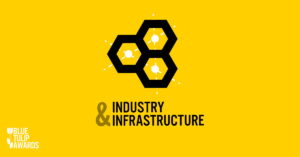Image credit: Truelayer
London-based fintech startup TrueLayer, today, has announced that it has secured a $70M (nearly €59M) Series D investment round led by new investor Addition. Existing investors, including Anthemis Group, Connect Ventures, Mouro Capital, Northzone, and Temasek, also participated, with a significant increase to the company’s valuation. Additional investors in the round include Visionaries Club, Surojit Chatterjee (CPO Coinbase), Zack Kanter (CEO Stedi), Daniel Graf (ex-Uber, Google, Twitter), and David Avgi (ex-CEO SafeCharge, CEO UniPaaS).
This round brings its total investment to date to $142M (approx €119.7M). According to the company, it will utilise this funding to fuel global expansion and accelerate the development of premium open banking-based services. It will also be used to expand TrueLayer’s engineering, product and commercial teams to meet the increasing global demand for its open banking platform.
“This new financial network we are building on top of open architectures has massive long term implications for the whole fintech ecosystem and we won’t compromise our vision in any way,” says Luca Martinetti, co-Founder and CTO at TrueLayer.
Staying true to open banking
Founded in 2016 by Francesco Simoneschi and Luca Martinetti, TrueLayer claims to be one of the first companies in the UK to be authorised and registered by the FCA (Financial Conduct Authority) to provide account information and payment initiation services under open banking.
“When Luca and I started TrueLayer in 2016, we imagined open banking becoming a new digital channel for solving cost and complexities around payments, digital identity, credit data and much more. We wanted to open up this newly built infrastructure to many businesses and consumers. It is such a joy to see our vision coming alive and open banking based payments quickly becoming the new normal,” comments Francesco Simoneschi, CEO and Co-Founder of TrueLayer.
The fintech claims that its API-first platform accounts for more than half of all open banking traffic in the UK, Ireland and Spain, processing billions of pounds in payments. It powers services for some of Europe’s fastest-growing brands, including Revolut, Trading 212 and Payoneer.
Witnessing growth
According to Truelayer, over the past 12 months, it has expanded its services across 12 European markets, growing payment volumes by 600x, and adding hundreds of new customers across digital banking, eCommerce, trading and investment, wealth management, crypto and iGaming. It also recently launched PayDirect, which combines instant pay-in capabilities with instant pay-outs, to deliver a higher converting, lower fraud method for online payments.
It claims that due to the increasing demand for its open banking platform, TrueLayer is rapidly expanding. The company attributes this growth to consumer demand for digital financial services.
The next phase
Talking about the future of the company in a blog post, Simoneschi mentions, “We’ll be launching new open banking based capabilities this year and we’ll continue to expand our network, adding broader and deeper connectivity across Europe and beyond.”
“We believe that open banking is reaching maturity in several markets and the next phase is about solving bigger, more complex problems for our customers – layering value on top of the raw infrastructure. You’ll see us building more and more in this direction,” he further adds.
Call for startups with innovative solutions for the future cities from all over the globe.









